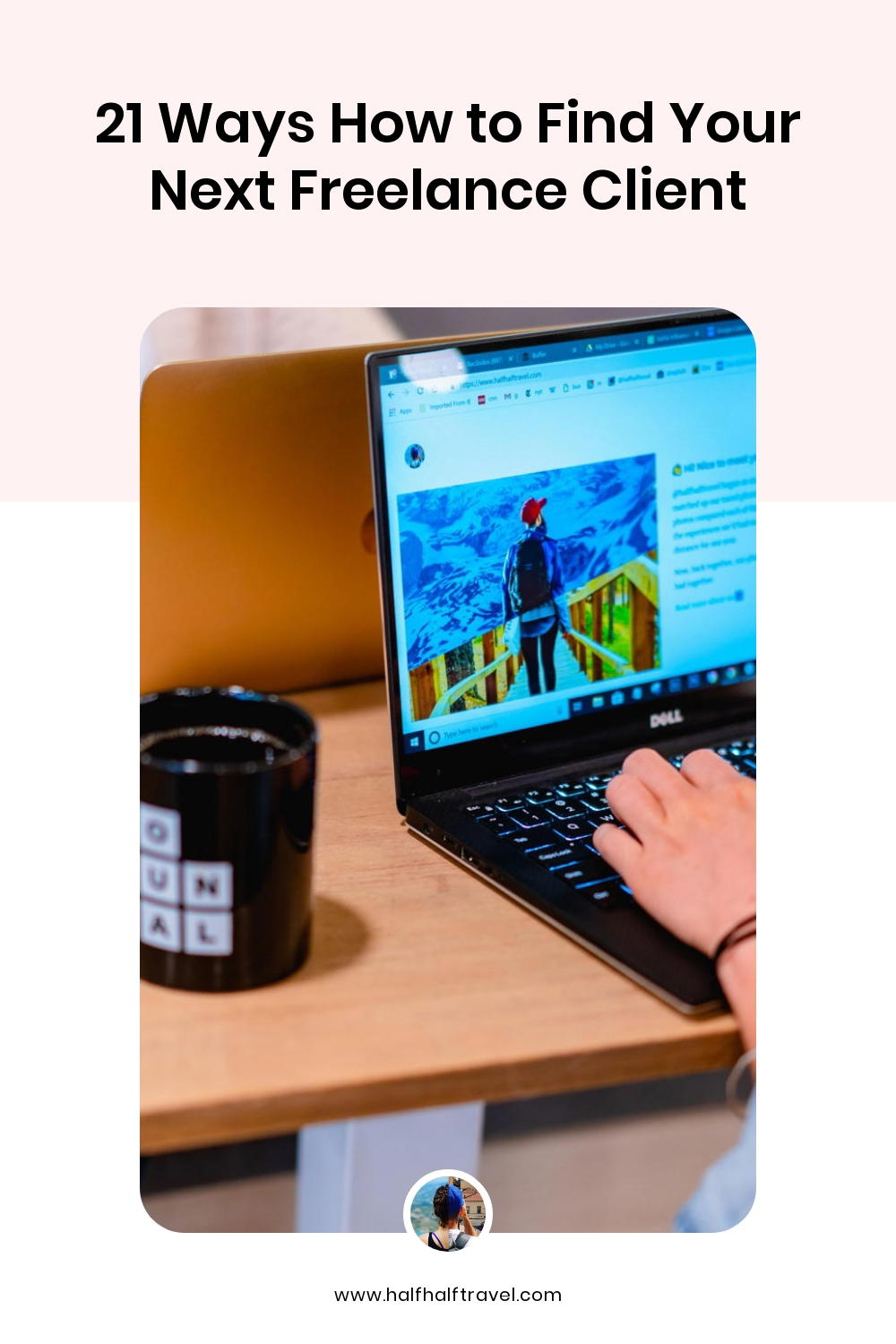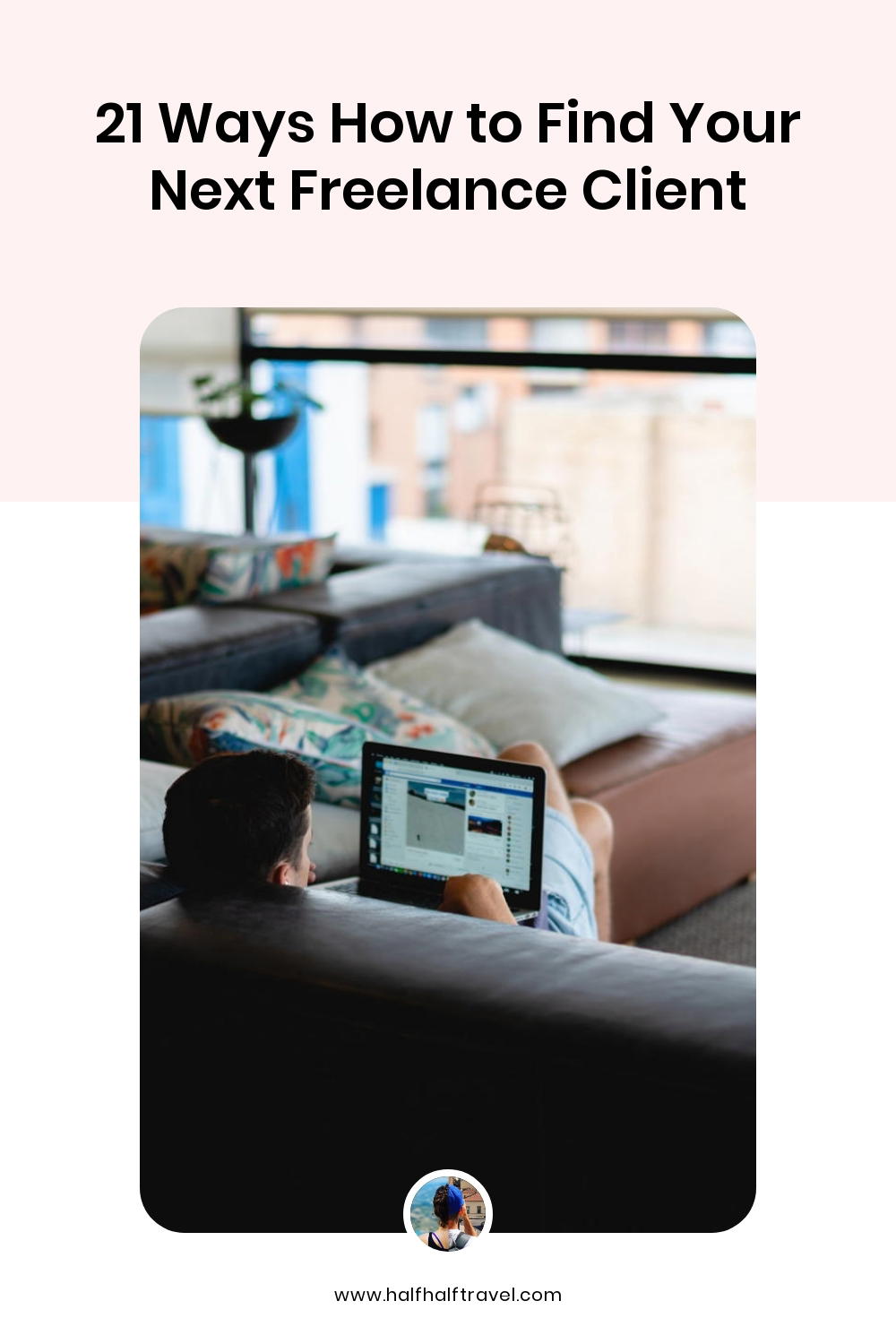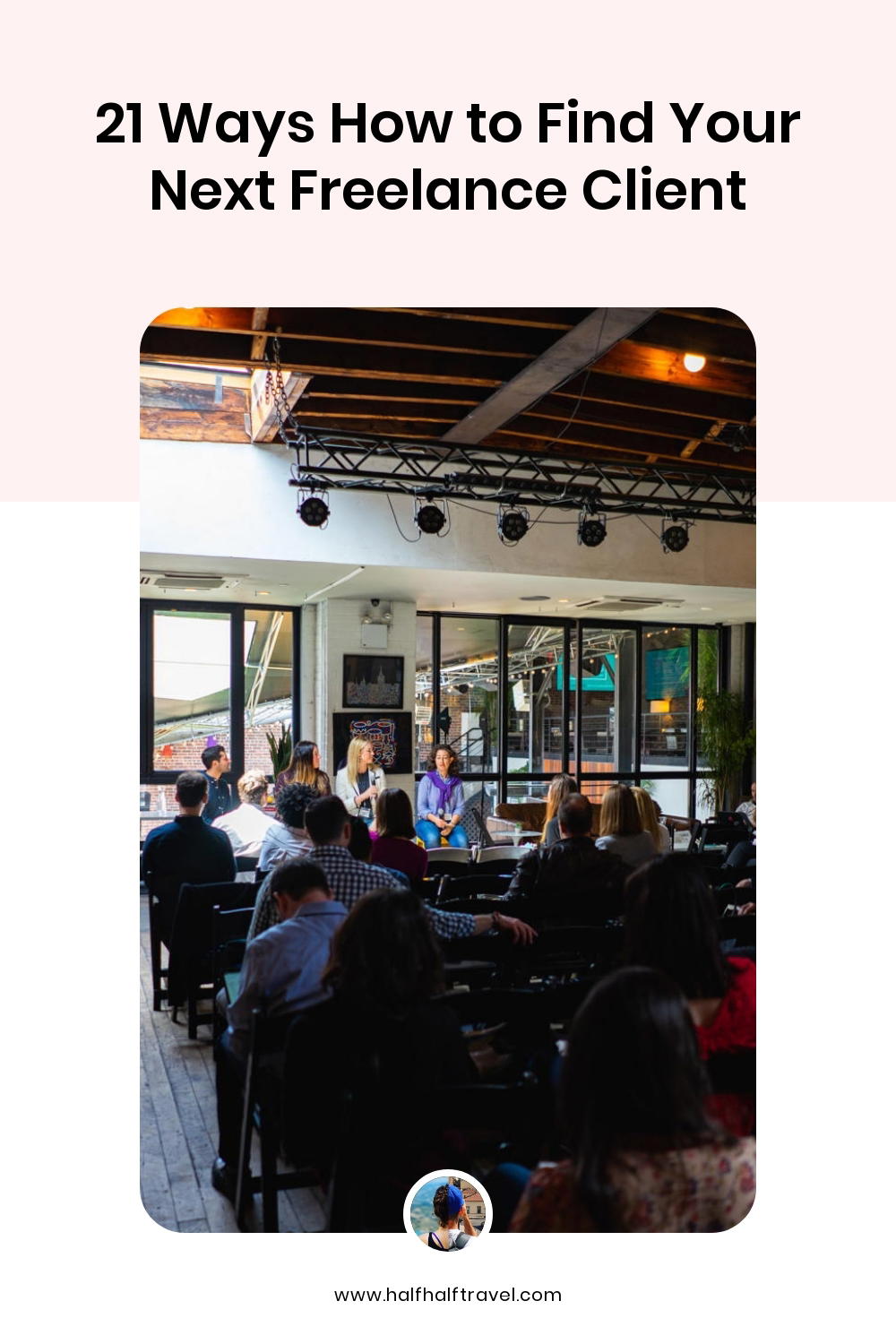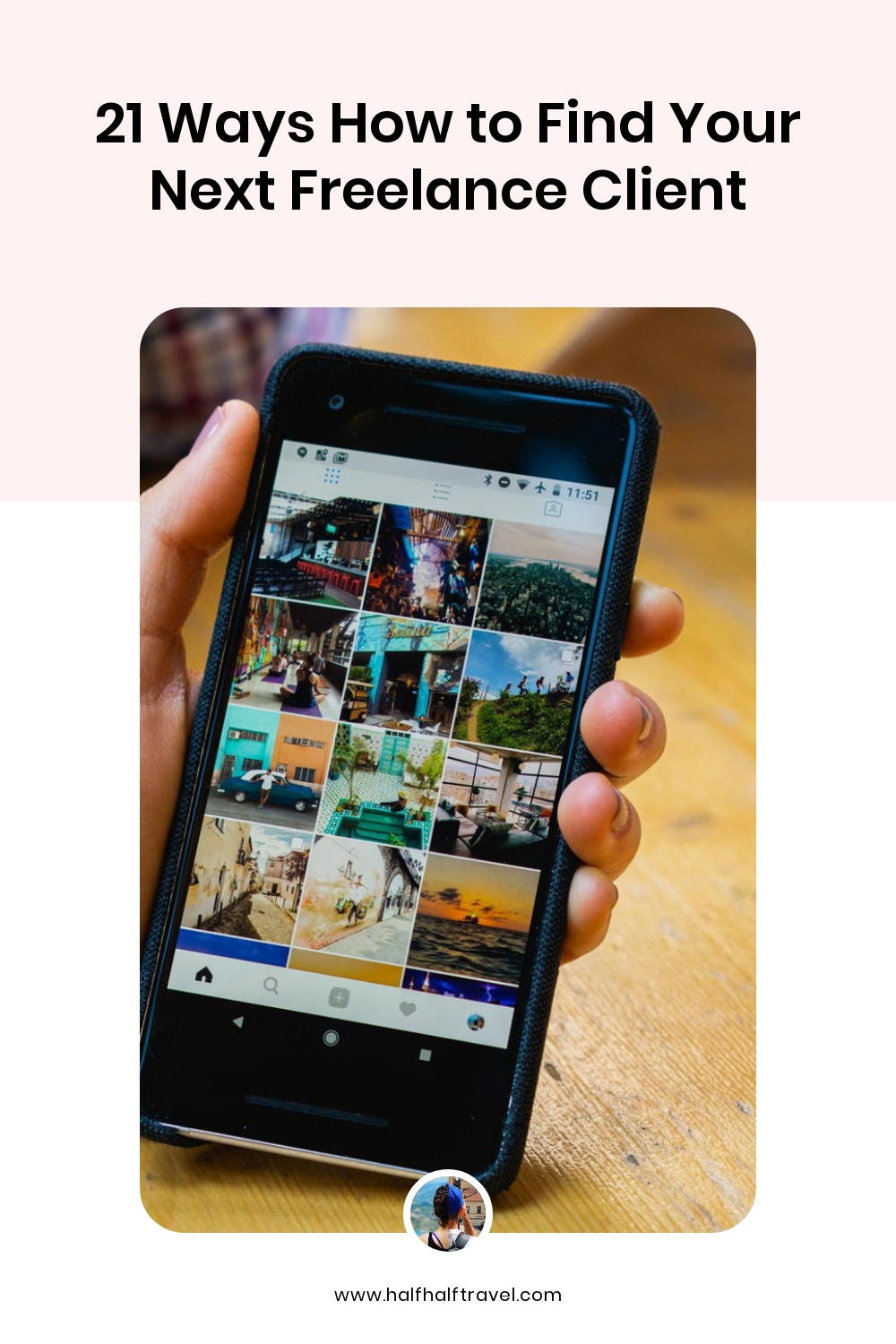21 Ways How to Find Your Next Freelance Client

Want to know how to find new freelance clients, or just how to find your next freelance client? Here are the best creative tips and tricks for ways to land new clients.
This article may contain affiliate links. We earn a small commissions when you purchase via those links — and it's free for you. It's only us (Becca & Dan) working on this website, so we value your support! Read our privacy policy and learn more about us.
Table of contents
- Network, network, network.
- Join industry-specific Slack workspaces and post about your services
- Become active in remote work communities online
- Mention to family that you plan to offer freelance services
- Start a social media account to publicize your freelancing creatively
- Send out a cold email to friends, asking them to forward your freelance biz
- Post an ad on Craigslist
- Tell past clients to refer you on, and offer a referral bonus
- Ask other freelancers if they need help or have extra work
- Join freelance gig websites like Upwork or Fiverr
- Try a subscription to a flexible job website like FlexJobs
- Make yourself an awesome website to showcase your services
- Start a blog on your small business or freelance business website
- Form a client-sharing coalition with a colleague in the space
- Talk to past coworkers and mention your search for new clients
- Post a flyer in a coffee shop, or gym, or public library
- Respond to postings in the #job or #gig channels of professional communities
- Join a coworking space, and chat up other professionals in the kitchen
- Get in touch with industry experts to see how they’ve gotten clients
- Make business cards, and don’t be afraid to hand them out
- Attend industry conferences, even virtual conferences, to ‘get out there’
So you want to start freelancing, huh?
Freelancing has become one of the biggest remote work trends in recent years, due to professionals working flexibly more than ever and considering that there is more to one’s career than what takes place at a full-time job in a physical office environment.
Both Dan and I have gotten into freelancing, in a pretty wide variety of different ways, encompassing all of the different unique skills we have in our skill sets.
Our freelancing has come in different flavors as well, from long-term contracts, to freelancing remotely, or on site, or at a client’s office, or in one-off gigs. We’ve even balanced freelancing while working full-time.
Dare we say we’ve seen it all, when it comes to freelancing?
What we like about freelancing in addition to working full-time for our employers (as of right now) is that it’s exciting. When you land a freelance client, you can celebrate, because that small victory is yours.
One of the biggest challenges of freelancing, naturally, is finding those clients. Some freelancers make it look so easy. Some freelancers even manage to find clients in between their client projects.
For us, freelance clients have come in a variety of ways. We’ll admit that some freelancing has “happened” to us. Some freelance clients have come our ways when we’ve least expected them. Other times, we’ve tried hard to win a client, and sometimes it hasn’t come through.
So, what are all the ways we recommend in procuring freelance clients or finding clients, whether the hard way or the easy way?
Let’s see all the different ways in which you can try to get new freelance clients and projects.

Network, network, network.
Networking is the first way everyone will tell you to get freelance clients.
“Are you networking enough?”
“Did you try networking?”
“How’s your networking going?”
It’s almost like everyone thinks networking is going to automatically get you a freelance client popping up out of nowhere.
The truth about networking is that it has to be relevant and crafty.
For example, today I got a Slack message in one of the professional communities I use for networking as a remote professional. The individual sent me a “cold” Slack direct message, spelling out a three-paragraph impersonal message about being a web developer and saying he was looking for work.
That’s one way not to do it. If I had all the time in the world, and if I were connected in this line of work (I happen to not be), I would be able to help. Instead, I have no connection to him, and he sent me a random, impersonal message that had no place in the aims of the professional community.
There is a correct way to network. To network as a freelancer and find your next client, connect with those in your industry, or those who have something in common. Or, start by asking around with friends and family you trust, if anyone knows an SEO analyst, videographer, graphic designer, sales consultant — you name it — to help you out with some introductions.
Networking comes in many forms, from “networking” at conferences, or in your social networks, or on social media. There’s no perfect place to start, but there’s no bad place, either.
The joy about networking is that if you treat it like an art, or a hobby, it can become enjoyable. Consider networking a way of constantly being introduced to new people with varying talents and skill sets, who may be able to help you find your next client in some way, if you respectfully ask the right questions.
Learning how to use Pinterest? Use our best-kept secret tool, Tailwind, to automate your Pinterest pins and keep them flowing. Try Tailwind today.

Join industry-specific Slack workspaces and post about your services
Like I mentioned above, there are lots of industry-specific Slack workspaces (communities). As I mention in my guide to networking remotely when you work from home, I’m a member of free Slack workspaces that range from massive women’s professional networks, to marketing professional networks and general ‘remote worker’ workspaces.
To find your next freelance client in a Slack workspace, post in a relevant channel about yourself or your work. An example can be as simple as, “Hey everyone, I’m a growth marketer looking for my next awesome client. If anyone’s in a similar space or has a connection, I’d love to hear from you.”
If you’re polite and tactful in a cold intro post, you may get some attention from others who are empathetic toward what you write. After all, you won’t be the first, or the last, to post such a message in a Slack channel where most professionals have the same types of goals.
Become active in remote work communities online
There are lots of remote work communities online. Some are general, like “We Work from Home!” and some are much more specialized, like maybe, “Social Media Marketers in the New York Metro Area” (as an example).
Remote work communities exist in Slack, and Facebook, and elsewhere. All you have to do is start Googling, and you may find your next online community in which you can become active and start enjoying the types of content that others provide.
These communities can be helpful places to post that you’re free for work, and they also might be places (like the Slack workspaces mentioned above) to reply to others who may write, “Hi, is anyone a Javascript Developer? I need help from someone qualified before the weekend.”

Mention to family that you plan to offer freelance services
I decided to start a new line of business this year after offering my services informally once, and winning my first client in a women’s professional community in Slack.
From there, I started offering my services toward anyone who posted that they might need them, even if it was only tangential. I started building a client base.
After six months of my business, I finally mentioned to my parents what I had been up to. When you offer services, whether remote or on-site, expanding to a network like that of your parents’ can be helpful because their connections are in a different generation and may help you expand.
So far, I haven’t gotten any new clients for this specific business from my parents or immediate family, but it’s not to say that it couldn’t happen tomorrow!
Start a social media account to publicize your freelancing creatively
Everyone will tell you to start a social media account to publicize your freelance services. While it’s not guaranteed that you’ll land a freelance client from social media, having that type of portfolio will help.
Are you a photographer? Check out our tips on how to find the best photography portfolio website.
You may be asking, what if my service is not art? What if my services aren’t even visual? How can I conceptualize a virtual service, the product of which is not tangible?
It’s true. Starting an Instagram for a small business requires some creativity. If your business has some type of tangential visual, start using photos of computers or people working, if you’re a web developer. If you offer health consultations, or maybe nutrition services, go for photos of food that tell a story.
Remember to always credit photographers or artists, by tagging their accounts and by using their profile name, or “handle,” in the caption to provide a photo credit.
Use relevant ‘hashtags,’ and do your own research on other larger players in the field to see which types of social media routes they’ve taken. See how they’ve created visuals for their services, or how their social media has changed over time as their services changed scope.
If you need some inspiration, check out all these NYC bloggers and influencers to follow, whose work may provide some ideas for visual themes.
Don’t stop there, though; check out our friend Ariela Kader, who turns trash into art, and teaches about it in schools, and our friends Alex and Ryan use social media to promote their fitness business and have had great success in that space.
Want to specifically engage with your followers on Instagram or other social platforms? Don’t miss our guide, which will show you how to engage with your followers. We wrote it for increasing our own audience!
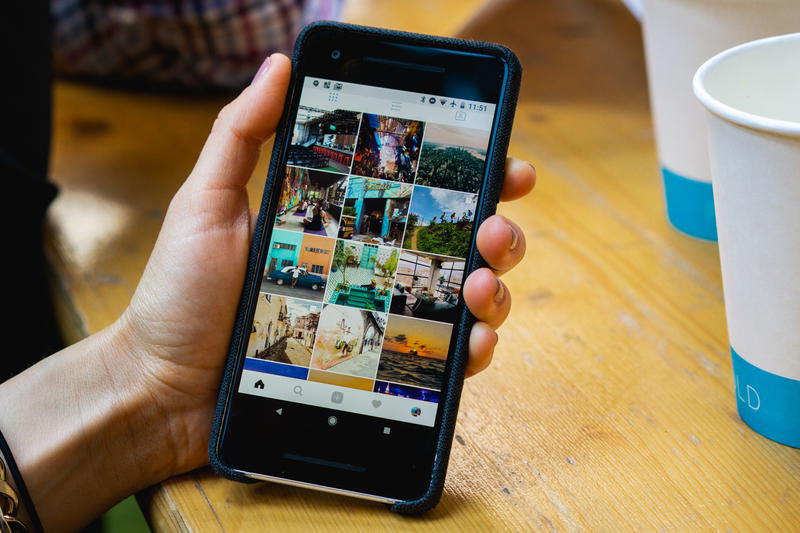
Send out a cold email to friends, asking them to forward your freelance biz
Even if your friends work in different industries (for example, we have friends in lots of different industries!), give a shout by email that you’ve started a business.
I did this just the other week. I hadn’t talked much about one of my new side businesses that I’ve been working on since March, and so when I broke the news to a group of friends via email, they were delighted to hear.
Word of mouth can be one of the most powerful tools, because you know your friends, but you never can truly know all your friends’ friends. Once someone overhears the need for a freelancer — a photographer, a graphic designer, an SEO expert, a social media manager — YOU may be the freelancer who comes to mind.

Post an ad on Craigslist
There’s nothing wrong with posting an ad on Craigslist, which can be a powerful tool in linking people, and usually for a small sum of money.
If you’ve ever listed a couch or a bike on Craigslist, you may have a fair idea of how it works. What you may not have used is the “Jobs” section of Craigslist, where anyone can post a job request (that you could answer), or, post an ad for your own services, seeking clients.

Tell past clients to refer you on, and offer a referral bonus
After the first year of starting our photography business Halfhalfphoto, we reached out to all our past clients, saying we were ready and available to book clients in the new year.
While not every single client replied, some did, and said they’d be glad to either spread the word proactively, or recommend us when a friend mentioned they were looking for a photographer.
As a favor to any past client who refers you onward, offer a referral bonus! This can either be a gift in the mail, or a credit toward a future purchase of your services. It’s a nice way to say thanks.
Ask other freelancers if they need help or have extra work
It may be difficult to picture freelancers having TOO much work, but it can happen. If you wind up with two 20-hour-a-week contracts, putting your commitments at 40 hours per week, you may be ready to turn down other odd jobs that come in so that you have some free time to yourself.
Not all freelancers must have too much work on their plates, but for those who do, they may be delighted to pass off work to freelancers in need, or freelancers just ‘starting out.’
Use our guide to networking when you work remotely to find out the best ways to network and get in touch with other freelancers. This is the first way to connect, and make it known that you have time for new freelance clients, and are willing and able to help out other professionals in a similar space.
Join freelance gig websites like Upwork or Fiverr
While there are lots of work from home job boards out there for freelancers, two are more well-known than others for catering specifically to freelancers. These two are UpWork and Fiverr, and they might be where you find your next freelance client.
Now, don’t get us wrong, because we haven’t used these websites much; however, there are some freelancers who have probably been swearing by them for a few years now.
To learn more about UpWork and Fiverr, check out our guide to the best online tools for travelers, where you’ll see details about how these two sites function, kind of in opposite methods.
In short, Upwork allows freelancers to submit proposals to clients, and Fiverr allows clients to buy freelancers’ services at the rates at which they list them. They can both get super competitive, so it’s worth reading more from experts who have had success on each.

Try a subscription to a flexible job website like FlexJobs
A website like FlexJobs vets all job postings from clients and companies, which makes it a bit of a different experience than Craigslist, where posts are varied and not ‘vetted’ by a dedicated team.
This is why FlexJobs requires a membership. The good news is, you can get a membership to try it out for as little as one week, and they usually have sales, like 30-50% off the regular membership price. It can be a steal, for sometimes as little as $3.50, which is way less than a dollar a day for those seven days.
Now, more than ever, FlexJobs lists flexible, remote and work-from-home jobs for freelancers, so there should be a good variety of a selection after you try out that membership.
Make yourself an awesome website to showcase your services
Even if you’re starting out, or even if you’re yet to get your first client, make yourself a website!
It’s funny, and it’s true: people trust services that have good websites. In fact, if you were a successful freelancer with no website to back up your services, people would find that hard to believe. A website is like a resume in this regard, and it’s even better because you can pass it around, post it on social media, send it out via email, text or Slack, and it lives on forever (as long as you pay for your domain).
But wait! Does your website need an upgrade? Read our blogging advice to learn more about creating a website for yourself.

Start a blog on your small business or freelance business website
It’s one thing to have a website for your small business or freelancer company, but the next step is to start a whole blog!
What’s a blog? Well, in short, it’s a part of your website where you can speak in your voice, and either detail how you’ve found success lately, or you can provide advice about what has worked for you in your field. Maybe you can lend some great advice to other professionals. Maybe you can do a run-down of a prized case study.
A blog also allows for more SEO so that you can bring traffic to your blog, and we discuss this in our list of what to do in between freelance clients, mainly speaking to working on your business website.

Form a client-sharing coalition with a colleague in the space
It may take time, but after you find that one dependable fellow freelancer in the same “space,” whether it be design, architecture, financial consulting, nutrition or you-name-it, talk about starting a client-sharing coalition.
This can be a way for you to have a way into a new client network. If your freelancer coalition colleague wants to take vacation, they can hand off a client to you during the week they’re away.
In the same way, sometimes it can be useful to take on clients as a duo. One of you can be the client contact, and the other can handle the dirty work; or, depending on your industry, you can perform the work in tandem, if the client job is sizable. It all depends on your situation, but it’s worth considering!
Talk to past coworkers and mention your search for new clients
Now with LinkedIn and other ways to stay connected while working remotely, it’s easier than ever to reach out to a coworker from a past job or gig and say something like,
Hi! Hope you’re well. I wanted to let you know I started a freelance business doing XYZ, and if you know anyone in the market for a XYZ-er, feel free to share my info! Thanks so much.
Sometimes it’s the briefest messages that will do the trick, and before you know it, your old coworker may pass on your name to your future freelance client.
Are you transitioning from full-time to freelance? Read our list of top tips for what to consider during this big time of change.
Post a flyer in a coffee shop, or gym, or public library
This may sound old school just like the business card idea, but how many times have you looked up from a water fountain and seen one of those flyers where there are stubs to take someone’s phone number?
That may sound like a thing of the 90s, but the paper flyer is not dead. In fact, coffee shops still allow flyers, especially really neighborhoody/indie ones, and local libraries usually welcome flyers on a bulletin board as well. It might be that your next client is weeding through the flyers and comes across your name and your website! Who’s to say?
Respond to postings in the #job or #gig channels of professional communities
Your next freelance client could be as simple as the person posting a job description or lead in a Slack community or Facebook group. Both of these ways are truly excellent hacks for networking that sum up how we’ve gotten freelance clients in the last few years.
Even if something doesn’t work out, it pays to keep in touch. I’ve had clients reach out with a need, and then the need dissolves. I’ve also had clients reply to my pitches, and take me up on hiring me, sometimes for one-off jobs that last several months to a year.
If you have the time, saying “yes” and being flexible and available work wonders when you’re starting out as a freelancer.

Join a coworking space, and chat up other professionals in the kitchen
Join a coworking space, if there’s one nearby! To learn what a coworking space is, see our guide that answers this question: “What is a coworking space?” and see how freelancers benefit from using coworking spaces.
Coworking spaces can be great places for networking as a remote worker or digital nomads.
Even if you’re based in one place (that’s fine, too!), joining a coworking space can introduce you to completely new professionals in your area, and you never truly know if the guy or girl next to you grabbing coffee in the kitchen is looking for a freelancer with your exact skill set.
That could be your next freelance client.

Get in touch with industry experts to see how they’ve gotten clients
Typically, asking professional freelancers in your field to chat with you will never be a bad thing. In fact, through networking remotely from home, I’ve been asked to give informational interviews about how I got my start in writing, blogging and social media content. I was flattered, rather than bothered!
The same goes for anyone who would like to talk to a veteran in the industry about how they got their clients. They will probably be delighted to tell you all about their freelance journey in getting clients and keeping them.
Remember: freelancing is one of the hottest trends in remote work right now, because it’s such a value-add to anyone who already works full-time or is developing their own business. It can be really exciting!
Make business cards, and don’t be afraid to hand them out
Maybe it seems old school, but every time someone takes a business card out of their wallet, they’re reminded of the person who gave it to them.
I can’t even begin to count the times I’ve taken an old business card out of my wallet, saying, “Who gave me this…?” and then I wind up Googling the individual whose card it is. Then, I’m reminded of their name, face and service, whether a freelance business or company.
Having something on physical paper isn’t for everyone, but you can certainly get creative with it. For example, we’ve given out small photos of ours, printed on cardstock, and it’s a great way to give someone a ‘souvenir’ of our brand that they can even hang on a fridge.
Attend industry conferences, even virtual conferences, to ‘get out there’
Even though industry conferences are becoming virtual, it doesn’t mean you won’t meet anyone new who may take your freelance business to new heights.
Conferences can be a funny thing: they’re like a big mashup of people from all sorts of levels in a particular industry, and you never know who you’ll strike up a conversation with by passing a booth or chatting in a speed networking session.
I attended the New York Times Travel Show, one of the coolest and largest travel industry conferences, and I was able to strike up some new contacts in new ways. It pays to be assertive!
I traded business cards with tourism representatives, writers, bloggers and others; I even had the courage to walk up to session speakers afterward to introduce myself and compliment their talks up on the stages.
You never know if your presence at an industry conference will lead to your next freelance client. All you have to do is try, and it’ll be win-win either way because you had a new type of experience and put your best foot forward.


You may also like
-
![A room with a table, chairs, and a tree.]()
How to Transition into a Full-Time Job after Freelancing Full-Time
Going back to the 9-to-5 after freelancing full-time is hard, which is why we’re sharing tips for going from freelance back to full-time, and returning to full-time work after ending a freelancing career.
-
![]()
How (And When) to Fire a Freelance Client
What’s the best most proven way to fire a freelance client? Use these examples with our “How to fire a client” sample letter and email template script.
-
![]()
How to Expertly Price Your Freelance Projects (Beginner's Guide)
Should freelancers charge hourly rates or project rates? Find out how to price freelance rates as a beginner, in these tips for freelance hourly rates, project fees, fixed fees and flat rates.
-
![]()
How to Explain Freelance Employment Gaps in an Interview
How do you explain an employment gap as a freelancer? To justify a freelance employment gap in an interview, use these examples and tips to explain any gap between full-time jobs.
-
![A laptop computer on a table with a cup of coffee.]()
14 Pros and Cons of Freelancing Vs. Working Full-Time
What are the pros and cons of freelancing? Are there advantages and disadvantages of freelancing? See the benefits of freelancing, and differences between being freelance vs. an employee.
-
![Woman working remotely with laptop at a trendy beach cafe]()
How to Work with Clients in Different Time Zones (14 Tips)
Need the best tips for working with clients in different time zones all over the world? See how to overcome challenges of communicating across time zones, and working with dispersed teams while working remotely or freelancing.
